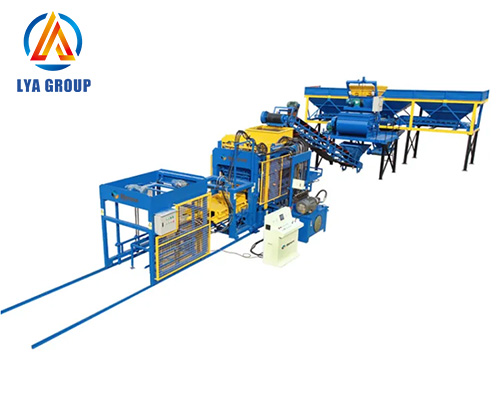hollow block production line
News 2024ŚĻī3śúą20śó• 87

A hollow block production line refers to a series of machines and equipment used for the mass production of hollow concrete blocks. These blocks are commonly used in construction for building walls, partitions, and other structural elements.
A typical hollow block production line consists of several key components and processes:
1.Batching and Mixing: Raw materials such as cement, sand, aggregate, and water are accurately measured and combined in specific proportions in a batching plant. The materials are then mixed thoroughly to form a homogenous concrete mixture.
2.Block Molding: The mixed concrete is transferred to a block molding machine, which can be either manual, semi-automatic, or fully automatic, depending on the level of automation. The machine contains a mold that shapes the concrete mixture into hollow blocks of the desired size and shape.
3.Curing: Once the blocks are molded, they need to be cured to gain strength and durability. Curing can be done using various methods such as natural curing (air drying) or accelerated curing (steam curing or using curing chambers). The blocks are typically stacked and protected during the curing process.
4.Drying and Stacking: After the curing period, the blocks are removed from the curing area and transferred to a drying yard or chamber. Here, they are allowed to further dry and harden before they are stacked and palletized for storage and transportation.
5.Quality Control: Throughout the production process, quality control measures are implemented to ensure that the blocks meet the required standards and specifications. This may involve regular testing of the raw materials, monitoring the mixing process, and conducting strength tests on the cured blocks.
6.Packaging and Distribution: Once the blocks are fully dried and cured, they are usually packaged and prepared for distribution. Packaging may involve wrapping the blocks in plastic sheets or using pallets to facilitate handling and transport.
It’s important to note that the specific design and configuration of a hollow block production line can vary depending on factors such as production capacity, automation level, and available resources. Advanced production lines may incorporate additional processes such as block surface treatment, block stacking systems, and automated handling equipment to optimize efficiency and productivity.
